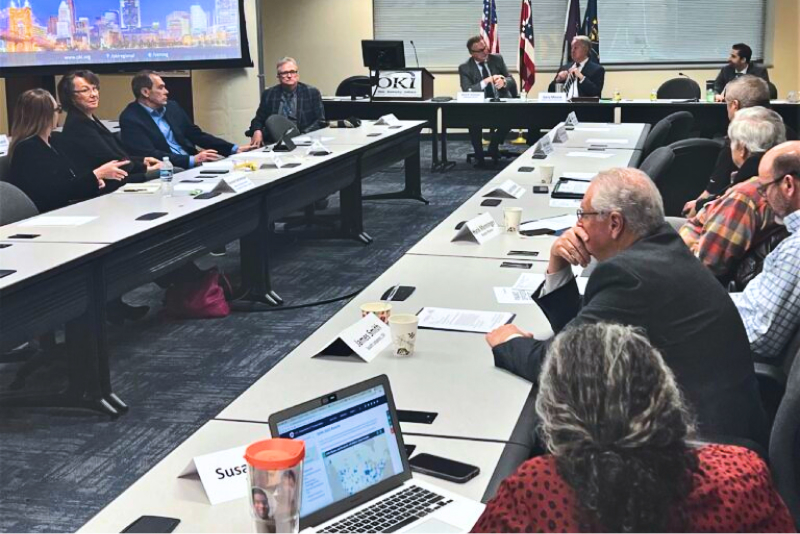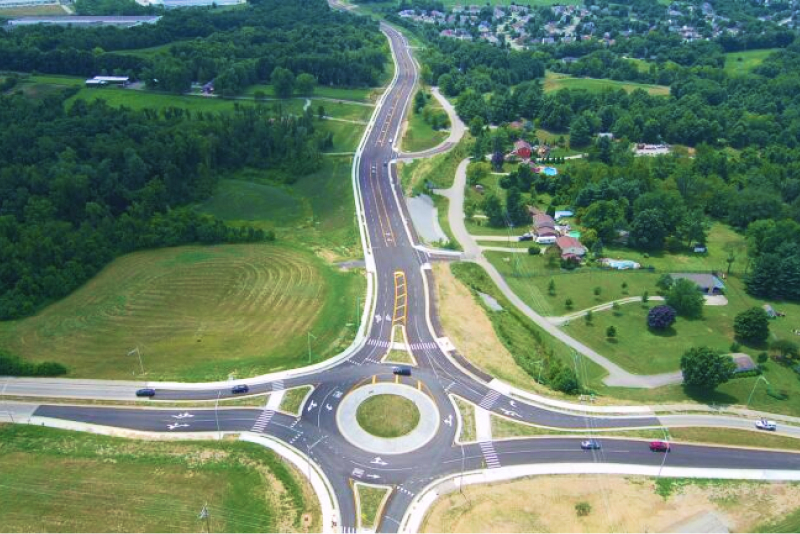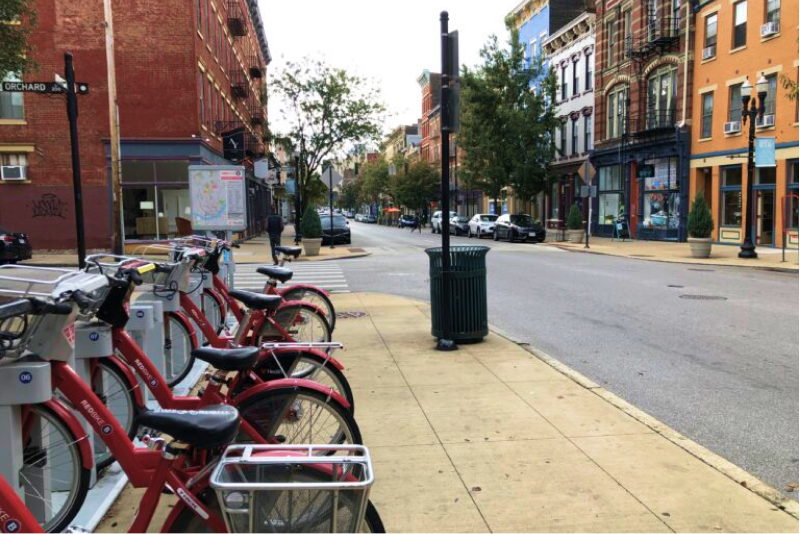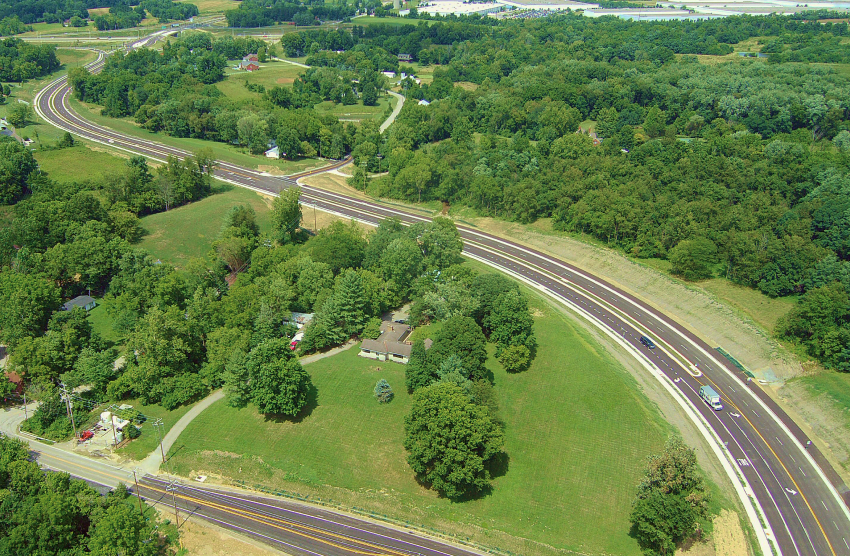Overview
As the metropolitan planning organization (MPO) for the Greater Cincinnati/Northern Kentucky area, OKI is responsible for transportation planning and air quality conformity.
In this role, we are responsible for completing air quality conformity for both our long-range metropolitan transportation plan and transportation improvement program (TIP). Transportation conformity is required by the Clean Air Act (CAA) Section 176(c). This establishes the framework for improving air quality to protect public health and the environment.
What is Transportation Conformity?
Transportation conformity ensures that Federal Highway Administration (FHWA) and Federal Transit Administration (FTA) funding is given to projects that the meet air quality goals listed in the state implementation plans (SIPs). OKI is responsible for the air quality conformity determination for the region’s long-range metropolitan transportation plan and transportation improvement program.
The Clean Air Act (CAA) requires that metropolitan transportation plans, metropolitan transportation improvement programs (TIPs), and federal projects conform to the purpose of the state implementation plan (SIP).
Conformity means that such activities will not cause or contribute to any new violations of the National Ambient Air Quality Standards (NAAQS); increase the frequency or severity of NAAQS violations; or delay timely attainment of these standards or any required interim milestone, according to the FHWA.
Current Status of OKI Region’s Transportation Conformity
The latest regional emissions and air quality conformity analysis was completed in November 2022 for the amended FY 2021-2024 TIP and our 2050 Metropolitan Transportation Plan.
- September 2023 – U.S. Environmental Protection Agency (EPA) found that the Kentucky portion area had attained the 2015 ozone National Ambient Air Quality Standard (NAAQS) and re-designated the Ohio portion of the area to attainment. This area includes the Kentucky counties of Campbell, Kenton and Boone.
- November 2022 – U.S. Environmental Protection Agency (EPA) found that the northern Kentucky region of the Cincinnati, Ohio, area had been re-designated to moderate nonattainment for the 2015 ozone National Ambient Air Quality Standard (NAAQS). This area includes the Kentucky counties of Boone, Campbell and Kenton.
- June 2022 – U.S. Environmental Protection Agency (EPA) found that the Cincinnati, Ohio, area had attained the 2015 ozone National Ambient Air Quality Standard (NAAQS) and re-designated the Ohio portion of the area to attainment. This area includes the Ohio counties of Butler, Clermont, Hamilton and Warren.
- October 2022 – EPA determined that the Kentucky portion of the area failed to attain the NAAQS by the attainment date. Nonattainment and maintenance areas must demonstrate transportation conformity.
- February 2018 – A federal court of appeals ruled in South Coast Air Quality Management District v. EPA. This decision affects the Kentucky portion of the Cincinnati area, and which was formerly nonattainment under the 1997 ozone standard — and is now in attainment for all other standards (Figure 3). This “orphan area” includes the more rural southern tier of Boone, Campbell and Kenton counties, which has not been subject to conformity since the 1997 ozone standard was withdrawn.
- June 2018 – OKI conformed again with the 1997 ozone standard. U.S. DOT approval of the conformity determination was Sept. 6, 2018. Per recent guidance, OKI will continue to qualitatively demonstrate Kentucky’s conformity with the 1997 standards for future MTP and TIP amendments.
Congestion Mitigation and Air Quality
The Congestion Mitigation and Air Quality Program (CMAQ) provides funding for projects demonstrating measurable reductions in vehicle emissions. Examples of these projects include:
- New transit service
- Traffic signal interconnection
- Park-and-ride lots
- New bicycle/pedestrian facilities
OKI’s Transportation Improvement Program includes 16 projects and $66 million in CMAQ funds. Those projects are expected to greatly reduce ozone pollution and fine particulates.
CMAQ Performance Plan
OKI is required to report specifically on regional condition, targets, and performance for the federal performance measures identified to carry out the Congestion Mitigation and Air Quality Improvement (CMAQ) Program.
To assess traffic congestion, the Federal Highway Administration (FHWA) developed two performance measures:
- Annual Hours of Peak Hour Excessive Delay (PHED) Per Capita
- Percent of Non-Single Occupancy Vehicle (SOV) Travel
To assess on-road mobile source emissions, FHWA developed one measure:
- Total Emissions Reduction, for all CMAQ-funded projects, of each applicable criteria pollutant and precursor
These measures are reflected in the Baseline Performance Period Report, which includes a description of CMAQ-funded projects programmed during the current performance period of 2018-2021. These measures are also reflected in the Mid Performance Period Report and Full Performance Period Report, which are required on a biennial basis and report on the progress in reaching 2- and 4-year performance targets.
What Guides Our Work
- The Clean Air Act (CAA), Section 176(c), establishes the framework for improving air quality to protect public health and the environment.
- MAP-21 for CMAQ








